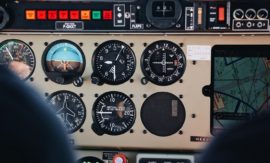In the short-term time horizon, the company releases order proposals that stem from long- or medium-term planning. In the same time horizon, unplanned sales are also realized that have to be delivered as soon as possible. If available, the items can be delivered from stock. Otherwise, creation and release of production or procurement orders is necessary.
An order release generally includes a test of resource availability. In addition, the techniques of materials, scheduling, and capacity management are put to use, independently of the type of data processing support available or the person performing the function. Scheduling calculations provide the necessary start dates for the operations. The components and the capacity must be available at the start date.
Specific techniques were developed for the release of multiple orders. De facto, they are techniques of control of operations as well. Load-oriented order release (Loor) is a generalization of order-by-order planning with limited capacity. For each work center, the capacity of a planning period is first multiplied by a loading percentage and then balanced with the load for all future periods. The load of later operations is thereby subject to a conversion. Operations that cannot be scheduled due to lead time calculations result in rejection of the order. Capacity-oriented materials management (Corma) provides an early release of stock replenishment orders when generally fully utilized capacities are available. More urgent customer production orders may interrupt the processing of these orders. Continual rescheduling, which uses the technique of probable scheduling, is meant to speed up or slow down the orders in a timely fashion. Furthermore, completion dates for stock replenishment orders are adapted to the actual consumption on an ongoing basis.
Shop floor control includes the issuing of accompanying documents for procurement and production. At least, there is an order document, possibly in electronic form. In production, there are also shop floor routings, picking lists, parts requisitions, and operation cards. Scheduling of detailed operations, the allocation of work to the single persons and machines, the assignment of production equipment, and the sequencing of the orders for each workstation then follow. Ideally, the person executing the operation should perform these functions.
Shop floor data collection records the use of resources. It includes the issuance of goods and the executed (internal and external) operations. It also yields information about the progress of orders, if this is not tracked separately. Shop floor data collection is necessary to ensure updated planning of the availability of goods and capacities. It also serves as a preparation for order costing, readjusting load standards, and quality assurance. Completed or incoming orders undergo quality control, sometimes using a quality control sheet. Results determine whether parts of the lot are accepted or rejected and sent on to rework or replacement.
Automatic shop floor data collection offers speed, but it usually incurs higher costs as well. The benefits gained through precise data collection, which lie in better knowledge and control of the production processes, must justify the cost. For short operations or in group-work organization, the actual time can be measured at reasonable expense only for rough-cut operations. The measure of performance is then the efficiency rate for the group as a whole and not the costing of a single job.
Distribution control encompasses the tasks involved in distributing finished goods to the customer. Once the distribution network structure has been chosen, the tasks include order picking, packaging and load building, and transport to the receiver. Picking can follow various strategies and may be order or item oriented. Packaging serves a number of functions, such as protection, distribution, information and promotion, use, and sales. Load building is the successive grouping of production units in packing units, load units (on pallets, for example) depending on the mode of transport, and finally in transport units. For transport to the receiver, solutions must be found for choice of transportation mode, routing and scheduling, and optimization of the loading space.
Course 15: Sections and their intended learning outcomes

Course 15 – Order Release and Control
Intended learning outcomes: Differentiate various techniques for order release. Explain in detail shop floor control. Present methods and techniques used for order monitoring and shop floor data collection. Describe distribution control.

15.1 Order Release
Intended learning outcomes: Describe order proposals for production and procurement as well as order release. Explain load-oriented order release (Loor) and capacity-oriented materials management (Corma).

15.2 Shop Floor Control — Production Activity Control (PAC) — Manufacturing Execution System (MES)
Intended learning outcomes: Describe the issuance of accompanying documents for production. Explain operations scheduling, dispatching, and finite forward scheduling. Present sequencing methods.

15.3 Order Monitoring and Shop Floor Data Collection
Intended learning outcomes: Describe recording issues of goods from stock and completed operations. Produce an overview on progress checking, quality control, report of order termination, and automatic and rough-cut data collection.

15.4 Distribution Control
Intended learning outcomes: Explain order picking, packaging, load building, and transportation to receiver.

15.5 Summary
.

15.6 Keywords
.

15.7 Scenarios and Exercises
Intended learning outcomes: Calculate examples for load-oriented order release (Loor) and for finite forward scheduling. Assess characteristics of capacity-oriented materials management (Corma) and of order Picking.
